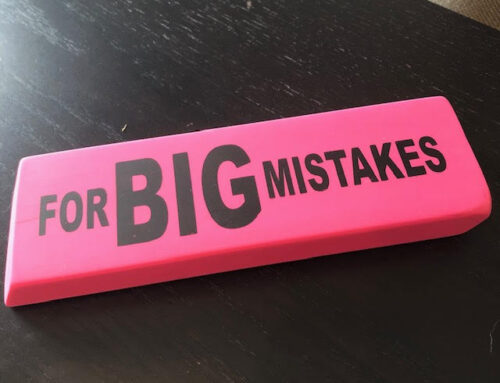“Insanity: doing the same thing over and over again and expecting different results.”
Albert Einstein
You’ve just been promoted to the role of project leader – only the timelines make yesterday look reasonable, with Everest-sized goals and budgets too tiny to track. Lucky you! The natural impulse is to forego the luxury of creativity and just muscle straight through to delivering the same old, same old.
Yet Canadian companies are increasingly listing innovation among the top important corporate values they want fostered throughout all levels of the organization. Richard Florida, as one of the world’s leading intellectuals on the transformative role of the “creative class”, references studies that show how giving employees access to more creative work or even small opportunities to exercise their creativity leads to increased employee morale and productivity.
So before you succumb to pressure and dutifully march along well-trodden paths, consider the following tips for how you can easily inject creativity into even the most routine projects:
Diversify Project Team Members
When you’re looking to recruit team members for a project, consider looking beyond the regular suspects. Fresh ideas require a fresh, new perspective. The same group of people working together in the same way over a long period of time will naturally find short-cuts that are helpful in meeting tight deadlines. But if you want to inspire new thinking and explore new possibilities, invite new people to join the team. Consider including someone outside the organization: an industry expert, a trusted supplier or, wait for it, a customer or end-user.
Support Risk-Taking
New ideas are delicate things. And the most exciting, break-through ideas can be down-right fragile. Introduced too quickly into a hostile and judgemental world before they’re able to stand upright, ideas quickly crumble and fade. Allow time in the planning stage for “what if” blue sky dreaming. During this time, fiercely protect everyone’s right to contribute impossible, ridiculous and even absurd ideas. Give them air and light. See where this free-thinking takes you. Remember: it’s always easier to take an exciting new idea and find ways to make it workable, then to take an old tired idea and try to give it wings to fly high.
Constructive Detours: Not Procrastination
In the planning stages and throughout the project implementation, build in regular intervals for constructive detours. Detours are an important way to ensure that creativity is used to explore smart new solutions. The three elements of a constructive detour are:
- Put away the task;
- Go for a detour by spending time elsewhere;
- Use the observations from your detour to see if elements can be borrowed and applied to solve your task in an innovative way.
A useful detour that is fun and challenges team members to think creatively is framed around movie genres. Everyone loves going to the movies. So say you’re working on a task and you run into a roadblock or you find yourself reaching for a tired formula. The first step is to put away the task momentarily (that’s right giving you and your team permission to break away from a task actually makes you more productive). Then ask the team to get creative and consider how this would be solved in a Western (with a gun?), in a Romantic Comedy (with a marriage proposal?), in a Horror Film (with a be-heading?) or a number of other popular film genres. Use these idea starters to stimulate new workable versions of some of these crazy ideas and see where this thinking might take you.
Creativity isn’t a luxury. When it comes to effective project management, building time and space for creativity will ensure that you’re delivering more exciting results. And it just might get you recognized for supporting the corporate goal of innovative and finding smart ways to weave this value into every day projects. Now that’s a smart new way to get yourself noticed and promoted.
Franca Miraglia is a senior PR professional who provides 1-1 and group professional development programs, including media interview, storytelling, presentation and creativity training. With over 25 years of experience, Franca has worked with hundreds of executives, Olympic athletes, recording artists and television personalities helping them to hone their communication skills.
If you’re interested in learning more about how to stretch your team’s creative muscles please contact us at [email protected].







Leave A Comment